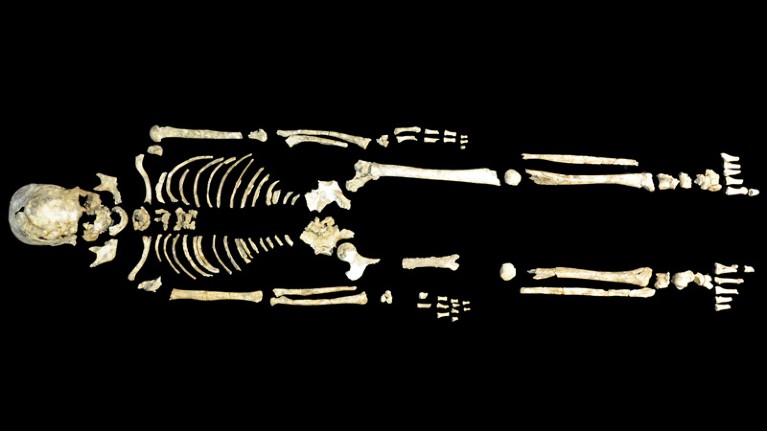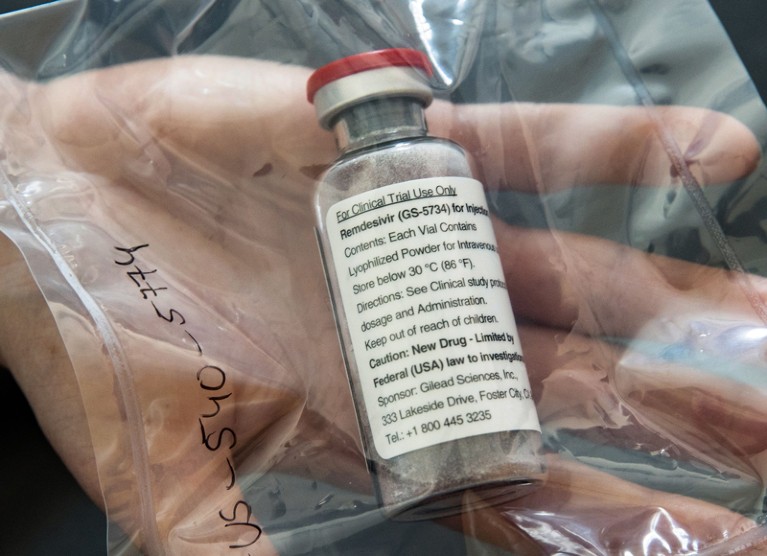Hello Nature readers, would you like to get this Briefing in your inbox free every day? Sign up here

An 8,400-year-old skeleton from the Qihe cave archaeological site in Fujian, China.Credit: Xiujie Wu/Institute of Vertebrate Paleontology and Paleoanthropology
Ancient genomes unravel history of East Asia
The first large ancient-genome studies of East Asia suggest that many of its inhabitants descend from two once-distinct populations. Two research groups analysed dozens of genomes from individuals who lived in the region, including what is now China, between 9,500 and 300 years ago. The genomes show that the two populations remained separate for thousands of years, but over time they began interbreeding. This could solve the mystery of how farming spread through the region — it was adopted as farmers and hunter-gatherers mixed. That’s different from what happened in western Eurasia; ancient-genome studies have found that farmers with Middle Eastern ancestry largely replaced hunter-gatherers in Europe.
Reference: Science paper & bioRxiv preprint
Features & opinion
Deep life (but not as we know it)
Basically Virtually everywhere they look, scientists are finding microorganisms living in porous rock deep underground, both on land and under the seafloor. Some estimates now put the number of subsurface organisms at around 1030 cells — an order of magnitude more than those living in soil, for example. Many of the microbes might not depend on photosynthesis, even indirectly. Instead, they could thrive on sources of energy such as hydrogen produced by naturally radioactive isotopes. Because energy is scarce, life down there is extreeeemely sssloooow. “It might take them 100 years or 1,000 years to divide just once,” says ocean ecologist Martin Fisk.
Five best science books this week
Andrew Robinson’s pick of the top five science books to read this week includes smart-technology spies, a final warning on the environment, and the staggering costs of cancer.
Podcast: Seeing double with Elisabeth Bik
Microbiologist Elisabeth Bik’s observations are among the most revered (and feared) in science. Last year, she left her job to work full-time on spotting duplicated images in the scientific literature. Eschewing software, Bik relies on her natural knack for spotting repeated areas, and doesn’t shy away from sharing her suspicions on PubPeer and Twitter. Bik tells the Nature Podcast “Once you see those patterns, it’s really hard to not,” says Bik. “To see the same thing, over and over again in the same photo — sometimes it’s just hilarious.”
Nature Podcast | 20 min listen
Bik estimates that her discoveries have led to at least 172 retractions and more than 300 errata and corrections. How would you fare? Check if you’re a super-spotter with the quiz in our accompanying feature. (Nature | 14 min read)
Subscribe to the Nature Podcast on iTunes, Google Podcasts or Spotify.
Where I work

Jessika Trancik is an energy-systems researcher at the Massachusetts Institute of Technology in Cambridge.Credit: Kayana Szymczak for Nature
Jessika Trancik using an app she and her students developed, which provides information on vehicles’ carbon footprint. Trancik is an energy-systems researcher who studies how electric batteries might affect fossil-fuel use. Her findings help policymakers and have helped to guide the US delegation to the Paris climate negotiations. “It also helps those considering investing in carmakers, as well as engineers who are developing road networks,” she writes. (Nature | 3 min read)

